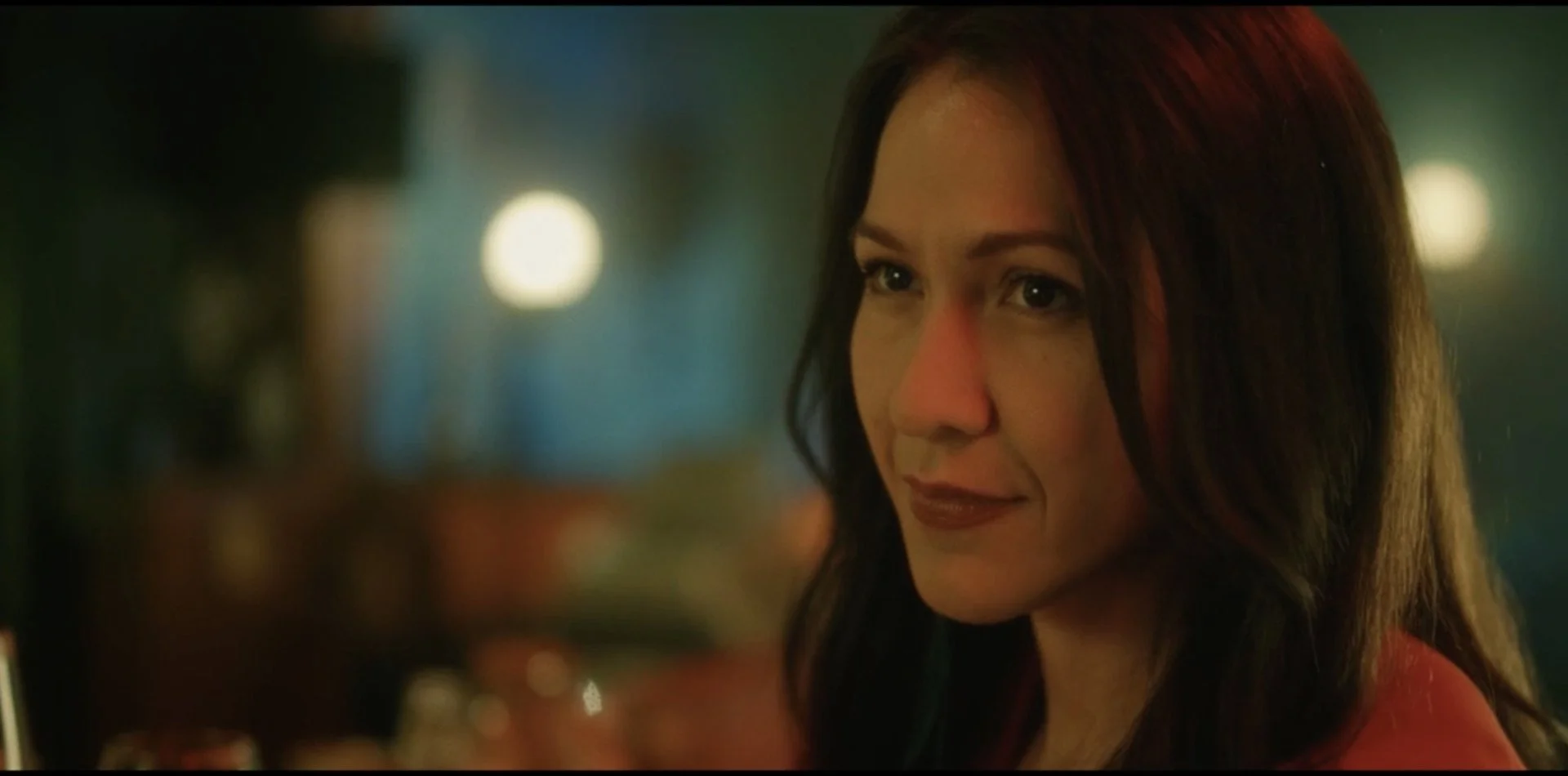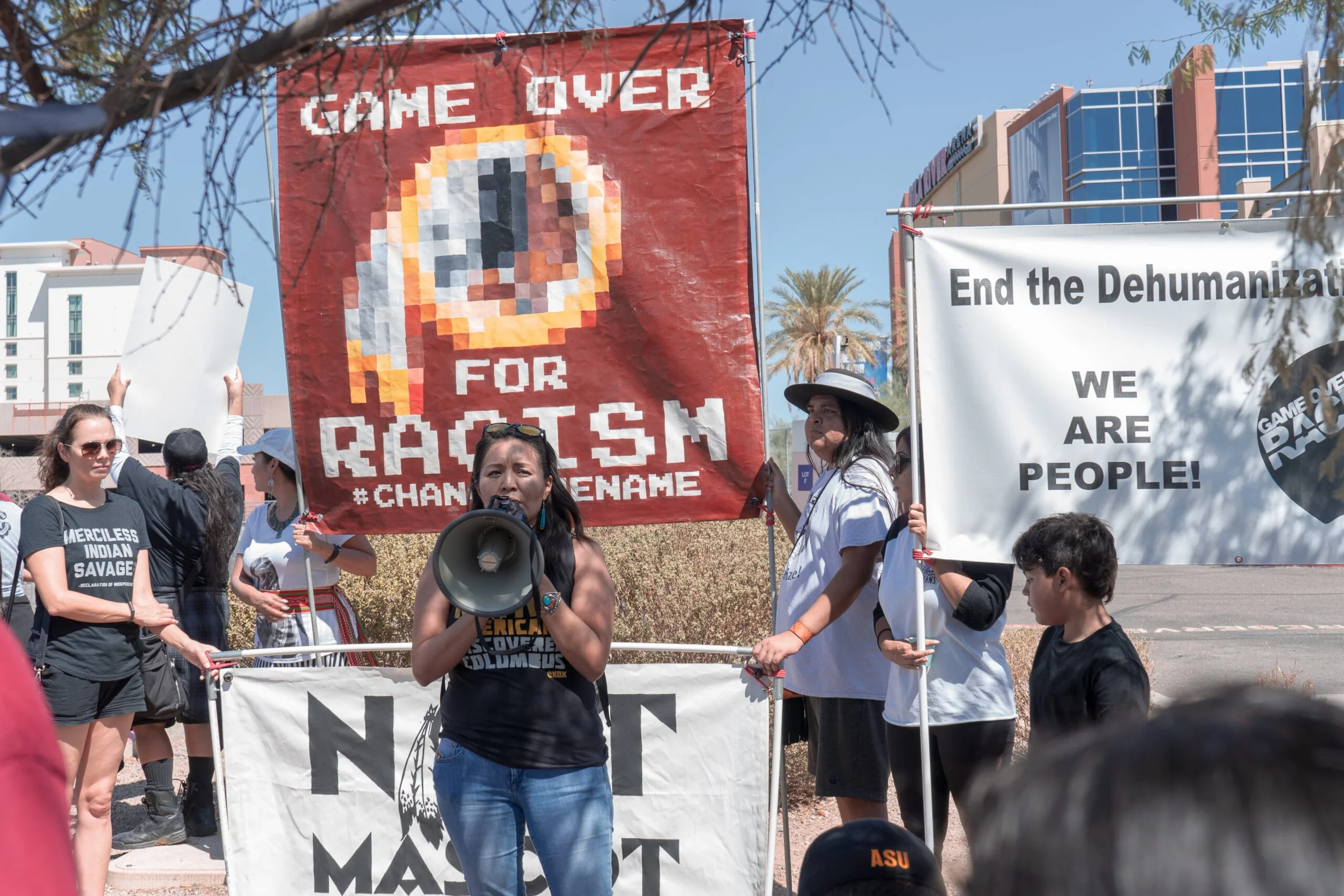ImagineNATIVE Film Fest Turns 23 With Mysticism, Mascot-Busting and Makeshift Families
By Jim Slotek
The ImagineNATIVE Film + Media Arts Festival launches its 23rd edition in Toronto October 18-30, even as film fans mourn the death of Mi'kmaw filmmaker Jeff Barnaby (Blood Quantum, Rhymes for Young Ghouls).
Organizers say there’ll be a tribute to Barnaby at Tuesday’s sold-out Welcome Gathering, with dance performances and food at 2 p.m. Tuesday, Oct. 18 at Daniels Spectrum on Dundas St. E.
But the most appropriate tribute in the wake of this loss is for Barnaby’s peers to continue their art, making films that entertain, question what has been blindly accepted, and defy convention.
Elle-Máijá Tailfeathers as “She” in Darlene Naponse’s Stellar
The 32 long and short films vary in their approach. Documentaries like Imagining the Indian: The Fight Against Native American Mascoting, take a hammer to the “honour” of naming sports teams and franchises after Native themes with grotesque Indigenous cartoon imagery.
Other features, like the leisurely apocalyptic opening night gala Stellar by Darlene Naponse (Falls Around Her,) leaven brutal truths with mischief, humour - and in this case, almost hallucinogenic whimsy.
Also in the ImagineNATIVE program: a virtual features program, digital/interactive works, music videos, audio works, exhibitions, and a spotlight on Mohawk visual artist/filmmaker Shelley Niro.
A few highlights:
STELLAR: (Oct. 18 and 19, TIFF Bell Lightbox). The often trippy, experimental film, which recently played the Toronto International Film Festival, is an allegory for a lot of things, but mainly the environment. It’s nearly all played out within the confines of a Northern Ontario bar, outside which the world is apparently ending (or rebooting).
As strange things appear in the sky, a woman known only as She (Elle-Máijá Tailfeathers) wanders the streets dreamily until she enters the bar, inside which she finds a nervous bartender (Rossif Sutherland) and a young man, He (Braeden Clarke) engaged in not much of anything except occasionally putting more quarters.
Once He begins to speak Anishinaabe to She, their quiet intimacy begins, even as the world outside turns to fire and flood, which panics various white people who pass through (including the bartender). The one exception is a white college professor (R.H. Thomson) from He’s past, who shows up unwelcomed to ‘splain history.
The non-white characters are more blase, including a possibly two-spirited older Indigenous couple (Tina Keeper and Billy Merasty) who identify themselves as “Aunties.”
Hallucinatory at times (psychedelic coyotes, a “flood” that brings giant fish to the window of the otherwise dry bar), Stellar shifts its gaze often to beautifully shot micro and macro shots of pristine nature and flowing water.
A Washington Redskins protest from Imagining the Indian.
As many have noted (and quoted by Barnaby), an apocalypse is no big deal to Indigenous people who’ve already survived one.
IMAGINING THE INDIAN: THE FIGHT AGAINST NATIVE AMERICAN MASCOTING: (Oct. 21, TIFF Bell Lightbox). t’s appropriate that this clear-eyed, take-down of the rationale behind professional and school teams with “Native” names, takes place as the Edmonton Elks (formerly the “Eskimos”) play out the CFL season, the Washington Commanders (nee “Redskins”) do likewise in the NFL and the Cleveland Guardians (the former “Indians”) are in tight against the New York Yankees in Major League Baseball playoffs.
Before it gets down to business in the generations-long fight to erase demeaning sports logos and rituals like the “tomahawk chop,” Imagining the Indian examines the whites-only history of depictions of the continent’s original population.
Simply put, our images from the days of settlers are from European paintings and novels, and subsequently from movies and Wild West Shows, cartoons, etc. It’s a theme echoed from Cree filmmaker Neil Diamond’s 2009 documentary Reel Injun.
Directors Aviva Kempner and Cheyenne filmmaker Ben West, eventually leave history behind to concentrate on the activists behind the decades-long battle over logos.
It’s a remarkably furious battle, that evolves from ridicule to a string of victories, with outraged team fans practically screaming in the faces of activists, “We are honouring you!”
A plethora of Natives tell their stories of growing up in the shadows of caricature, the case against faux-Native logos becoming more solid with each.
THE DROVER’S WIFE: THE LEGEND OF MOLLY JOHNSON: (Oct. 21, TIFF Bell Lightbox, Oct. 24-30 virtual). Australian Indigenous actor-director Leah Purcell (Lantana, the TV series Wentworth) brings us her directorial debut, an update of the 1892 story The Drover’s Wife, about a pregnant woman (Purcell) holding her own in an unforgiving Snowy Mountains region of New South Wales.
Her only ally, an aboriginal man on the run from the law named Yadaka (Rob Collins) with whom she shares life stories and mutual respect. Memorable mountain vistas provide a beautiful backdrop for a personal story that manages to touch on Australia’s all too familiar history of racist laws, stolen children and gender violence.
ROSIE: (Oct. 23, TIFF Bell Lightbox, Oct. 24-30, virtual). Many Indigenous-themed features are dire, understandably so. But this closing gala, Metis writer-director Gail Maurice’s feature debut, is a remarkably upbeat portrayal of people on the fringes of society.
Ready-for-Hollywood child actress Keris Hope Hill is Rosie, a little girl of Indigenous heritage whose mother has died, and who is directed by child services to the care of her Francophone aunt Frédèrique (Melanie Bray), a.k.a. “Fred.”
Their logic is puzzling, since Fred can’t keep a job, can’t sell her art, and is constantly on the verge of homelessness. Happily, she has two adorable drag-scene besties Flo (Constant Bernard) and Mo (Alex Trahan) for support and a place to crash.
They each have their traumatic pasts, but when they’re together, positivity flows from the screen with the intensity of a fire hose. There are oblique references to the part the Sixties Scoop of Indigenous children may have played in Rosie’s family. But for the most part, this is tragedy-light, set up for a feel-good finale.
There are worse ways to leave a theatre than with a smile.




